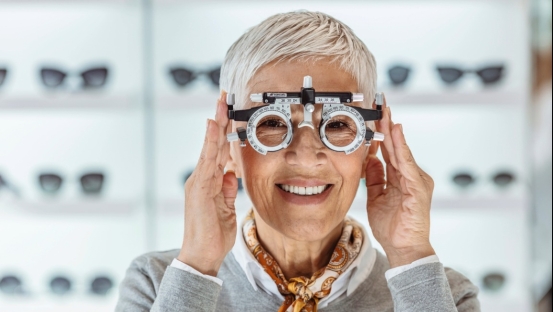Wet age-related macular degeneration (wet AMD) is a serious condition that affects central vision, posing a threat to the quality of life for millions of Americans. Understanding the treatment options available is essential for preserving vision and managing the disease.

What is Wet AMD?
Wet AMD occurs when abnormal blood vessels form under the retina, leaking fluid that causes swelling and distorts central vision. Unlike dry AMD, which progresses more gradually, wet AMD can lead to rapid vision loss, making early detection and intervention crucial.
Approximately 10% of individuals with AMD develop the wet form, which is more common in those over 60, though younger adults with certain genetic predispositions may also be at risk. Key warning signs include blurred or distorted vision and dark spots in the central field of vision. Early recognition is critical for seeking prompt medical care.
Anti-VEGF Injections
Anti-vascular endothelial growth factor (anti-VEGF) injections are the primary treatment for wet AMD. Medications such as ranibizumab (Lucentis) and aflibercept (Eylea) work by inhibiting the growth of abnormal blood vessels, helping to prevent further vision loss and, in some cases, even restoring vision.
These injections are given directly into the eye, initially on a monthly basis, with fewer treatments required as maintenance. Clinical studies have proven their effectiveness, though continuous treatment is necessary. Patients should be mindful of potential side effects, such as eye infections or elevated pressure in the eye.
Laser and Photodynamic Therapy
Laser therapy is another treatment option for specific patients. It works by targeting and sealing leaking blood vessels, which helps to prevent further damage to the retina. However, laser therapy is typically used in select cases.
Photodynamic therapy (PDT) involves a light-sensitive medication that, when activated by a laser, selectively destroys the abnormal blood vessels. PDT can lead to significant improvements for some patients, although its success depends on the stage of the disease and individual patient factors.
Lifestyle Choices for Better Eye Health
In addition to medical treatments, adopting a healthy lifestyle can support better eye health. A diet rich in leafy greens, fruits, and omega-3 fatty acids is beneficial for eye function, while managing weight and blood pressure can slow the progression of AMD.
Regular eye exams are essential for early detection of changes in vision, and wearing UV-blocking sunglasses and quitting smoking can help reduce the risk of worsening AMD. Exercise is also recommended, as it improves overall health and may help delay the onset or progression of the disease.
Treatment Risks and Side Effects
While treatments for wet AMD are effective, they come with potential risks. Anti-VEGF injections may cause temporary discomfort or blurred vision, and in rare cases, they can lead to serious complications like retinal detachment. Laser therapy may cause scarring or temporary changes in vision.
Patients should work closely with their eye care providers to weigh the risks and benefits of treatment options. Open discussions ensure that decisions are made with a clear understanding of the individual’s specific needs.
Conclusion
Wet AMD is a challenging condition, but effective treatment options are available. Anti-VEGF injections remain the primary therapy, while laser and PDT therapies offer valuable alternatives. Complementing these treatments with a healthy lifestyle can help enhance outcomes. With the right care, individuals with wet AMD can better protect their vision and enjoy a higher quality of life.
